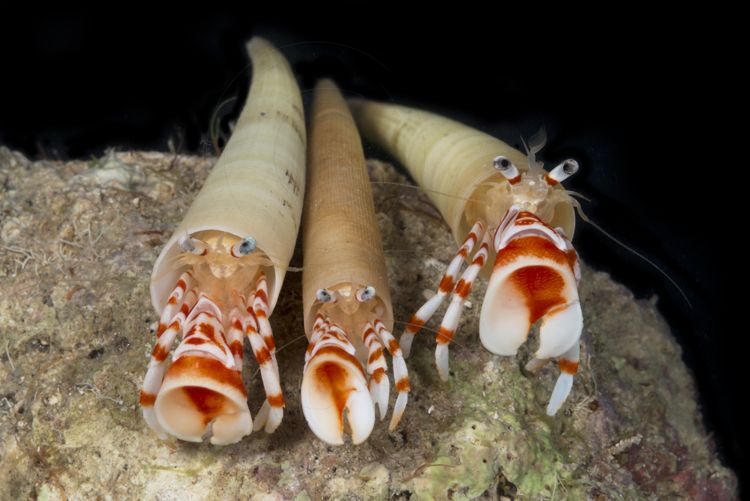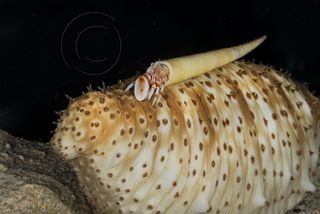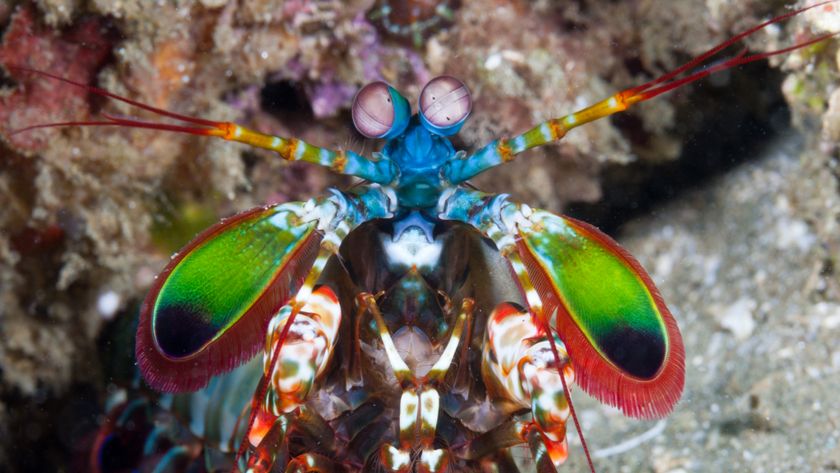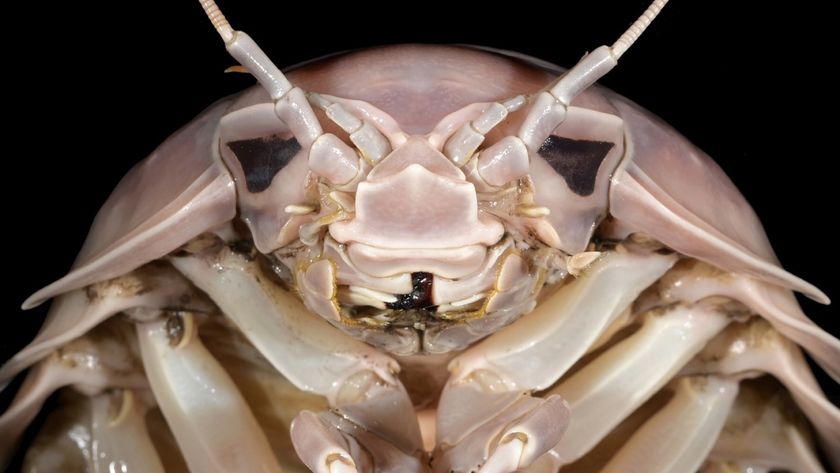
Hermit Crab Species Found Alive for First Time

A recent submarine dive turned up a species of hermit crab that was previously only known through dead, dried specimens procured more than a century ago.
The sub collected a few of the animals, known as Pylopagurus discoidalis, from the Caribbean and brought them back to an aquarium, where they were photographed. These are the first pictures of the live animals ever taken, said Rafael Lemaitre, a research zoologist at the Smithsonian Institute's National Museum of Natural History.
Like other hermit crabs, these make their living in shells produced by other animals, mainly mollusks, Lemaitre told OurAmazingPlanet in an email. They must choose carefully, however, to find a shell that fits their tube-shaped body. The most striking feature of the animal is its chelae, a shield-shaped appendage that allows it to firmly seal its shell when alarmed, Lemaitre said. The other end of the shell can also be sealed by the hermit crab with the tail-like end of its body.
The animals were collected at a depth of 50 to 100 meters (164 to 328 feet) by a craft called the Curasub, just off the coast of the Caribbean island of Curaçao. It was found as part of the Smithsonian's Deep Reef Observation Project, which provides "an extraordinary and unique opportunity for taxonomists like me to make direct, live observations of many species that have previously been known exclusively from preserved and colorless specimens in museum collections," Lemaitre said.
Not much has been revealed regarding how these little hermit crabs live their daily lives. "We know very little about the biology of this species except that it exists, and its general geographic and depth distribution," Lemaitre said. "Unfortunately, that is the case for the majority of invertebrate species."
After some of the collected crabs died, their DNA was taken and is currently being analyzed to understand its evolutionary history, Lemaitre added.

Email Douglas Main or follow him @Douglas_Main. Follow us @OAPlanet, Facebook or Google+. Original article on LiveScience's OurAmazingPlanet.
Sign up for the Live Science daily newsletter now
Get the world’s most fascinating discoveries delivered straight to your inbox.












